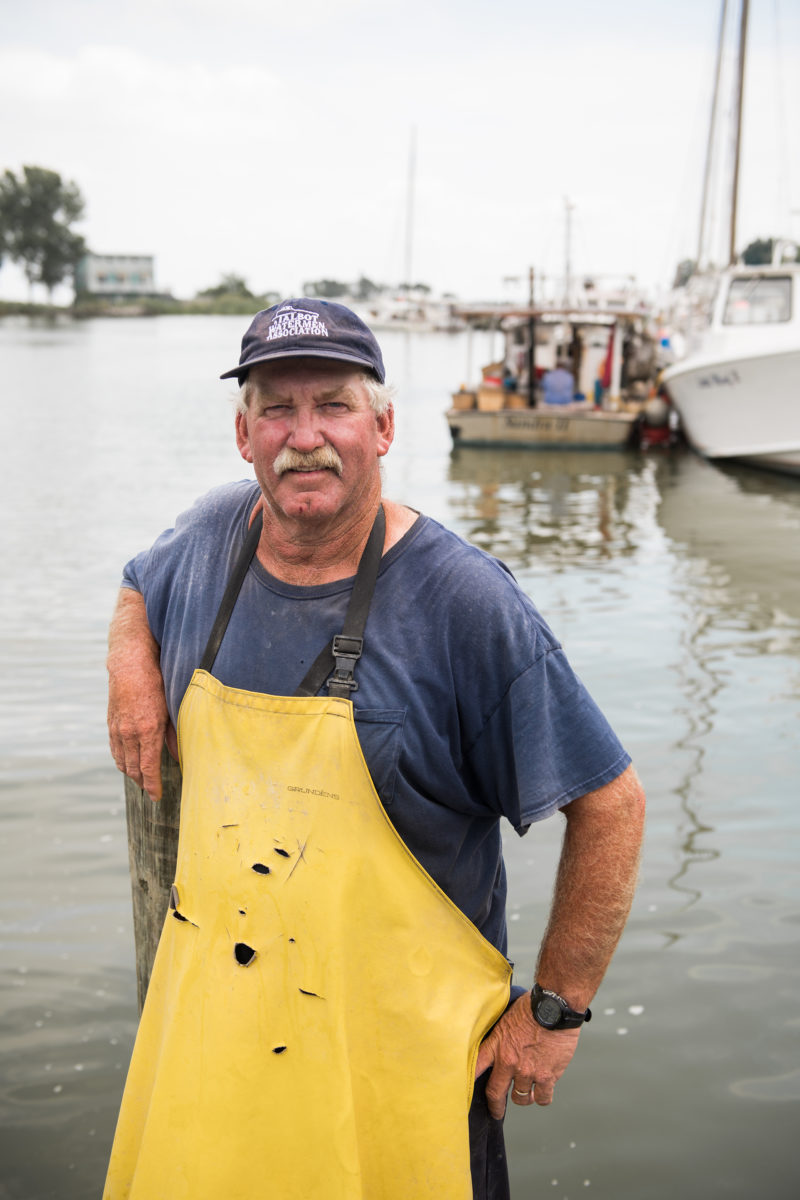EARLY TO RISE Commercial fishermen tong for oysters as day breaks on the Chesapeake Bay.
As Oyster Harvesting Becomes More Complicated Than Ever,
Has The Independent Waterman Become A Vanishing Breed?
Many of his fellow longtime Chesapeake Bay watermen already have retired. But Jeff Harrison is still going strong after 41 years. Or at least he’s trying. It has grown increasingly challenging for Harrison to consistently succeed in oyster harvesting year after year.
Waterways that once made catching the state’s bushel limit a common occurrence in his early years, he said, have shrunk greatly with the growth of aquacultures, as well as sanctuary programs operated by Maryland’s Department of Natural Resources.
The past year was especially difficult, for commercial watermen and aquacultures, because greater rainfall totals lowered salinity levels in waterways. “When water is fresh, oysters don’t grow as much,” Harrison said. “They grow quicker when the water is salty.”
In August, the Salisbury Daily Times reported that the University of Maryland’s Horn Point Hatchery, the state’s largest oyster hatchery, produced about 6.5 million oyster spat-on-shell — 200 times less than last year and 300 times less than two years ago.
The report indicated that the hatchery may fall short of the 500 million mark for spat-on-shell for the first time in 15 years. Despite the difficult times, this fifth-generation waterman still heads out onto the Choptank River, Broad Creek, Tilghman Island and the area of Harris Creek that’s part of the sanctuary program guidelines to continue a passion that began as a 16-year-old working alongside his father.
Yet, he’s not alone. Even as older watermen leave the industry, Harrison said, “We’re starting to lose little bits and pieces of bottom all over the bay. You have more and more people in a smaller area. You either have to leave here and go down the bay, as I’ve done in the past, or you can tough it out. It’s not good when you do that because, you know, it’s really hard.”
There is room for coexistence, Harrison added, even as he faces more rules and regulations. Commercial oyster harvests are sold in winter, while aquaculture-bred oysters are sold in summer.
CHANGING TIDES Even as watermen like Jeff Harrison face an escalating number of rules and regulations, he steadfastly maintains that there is room for coexistence between the independent waterman and growing presence of aquacultures.
The timing is one thing, but according to Harrison, space is another. Harrison said there simply isn’t enough room for everyone to harvest. He travels an hour or more south, to Tangier Sound and other spots, to harvest oysters because, he said, more of the prime areas in the bay have been added to sanctuary programs.
“They took half of the bottom we’ve worked on. The reason for that is that it’s the best bottom. For 10 or 15 years, sanctuaries only had nine percent of the bottom,” he said. “Eighty percent of the sanctuaries are on the Eastern Shore. Eighty percent of the tributaries that are sanctuaries are on the Eastern Shore. We are trying our best to get something back. But I don’t think it’s ever going to happen.”
Commercial watermen, Harrison said, also have less funding for the industry. “The only funds we get are generated by the industry through a bushel tax on oysters and surcharges on license fees.”
Harrison has endured difficult times on the bay before — destructive disease in 1985, followed by another bout with disease in the early 1990s that, he said, really destroyed the industry. “It started us in a downward spiral until 2003, when we had the worst harvest of 26,000 bushels in the Maryland part of the bay.” Still, he continues to push forward.
“My family was into it,” Harrison said. “It’s how we were brought up.”
Story by Victor Fernandes
Photos by Jay Fleming


